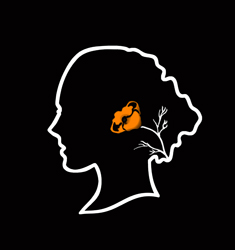Dr. Lyndal Laughrin, oil on canvas, 24x30, by Holli Harmon
Habitat Change over Time
Grade: 6th
Subject: Natural Science, Ecology, Island Fox, Santa Cruz Island, Non-Fiction Material
Class Sessions: Two
Lesson Summary: Students will do a lesson focused Santa Cruz island looking at the various uses of the land over its history. Students will explore the fundamentals of land development and look into a special case of conservation involving the Island Fox. Dr. Lyndal Laughrin’s story gives students a person to connect with their science education. The guidelines below are meant to help students apply technical terms and gain experience in reading non-fiction essays. Adapt the resources below to fit your student’t needs.
Lesson Objectives:
Students will learn how natural resources can be used for different purposes at different times in history.
Students will study the impact/consequences of using land for different purposes over time.
Students will understand the basic Ecology of Santa Cruz Island.
Students will investigate the work of conservationists like Dr. Laughrin
Materials:
Portrait of Dr. Lyndal Laughrin by Holli Harmon
Video of Dr. Laughrin from portraitsofthecentralcoast.com
Essay on Dr. Laughrin from portraitsofthecentralcoast.com
Photo Copy of President Theodore Roosevelt and John Muir on Glacier Point in 1903 in Yosemite Valley
Resources to define: Ecology, Conservation, Indigenous, Biology, Habitat, Predation and Foodchain.
Here are some websites that will help with definitions.
http://www.terrapsych.com/ecology.html - A definitions bank of Natural Science and land resource terms.
http://www.pri.org/stories/2016-09-23/group-endangered-island-foxes-are-breaking-records-bouncing-back-brink-extinction - news article about the Island Fox
http://www.thecifilm.com/ - West of the West docomentary about the Channel Islands
Lesson Steps:
Class Session 1: Anticipatory Set: What can you do with Land? Possible answers: farming, housing, ranching, habitat, national park . . no wrong answer, just get students to think about what land is for.
See, Think, Wonder portrait Dr. Laughrin by Holli Harmon
Hand out sheets of focus questions for the video interview of Dr. Laughrin by Holli Harmon.
Watch video interview of Dr. Laughrin
Create three columns on the board addressing: Land (as is), with development over time, now
Santa Cruz Island use history
6. Introduce Bold Terms (integrate with what seems best for your students and the pace of the lesson).
7. Make sure students have a three column copy of the chart you’re making on the board
8. Have students write a one paragraph reflection on land use change over time for use in a bigger assignment during Class Session 2.
Class Session 2
Introduce students to the Island Fox
Emphasize habitat, food chain and predation.
If possible, view West of the West segment on the Island Fox.
Work on creating a two page assignment with an accompanying visual and a page tracking the development of Santa Cruz Island. E.g. Preservation Ad, Picture of Fox, Picture of Dr. Laughrin,
Assessment:
Students ability to listen, articulate and add to discussion (See, Think, Wonder is a good assessment)
The paper
Retention of terms and definitions.
Standards Addressed:
CCSS Reading Standards for Literature
Key Ideas and Details
6.2 Determine a theme or central idea of a text and how it is conveyed through particular details; provide a summary of the text distinct from personal opinions or judgments
Craft and Structure
6.4 Determine the meaning of words and phrases as they are used in a text, including figurative and connotative meanings; analyze the impact of a specific word choice on meaning and tone. (See grade 6 Language standards 4–6 for additional expectations.) CA
Integration of Knowledge and Ideas
6.7 Compare and contrast the experience of reading a story, drama, or poem to listening to or viewing an audio, video, or live version of the text, including contrasting what they “see” and “hear” when reading the text to what they perceive when they listen or watch.
Comprehension and Collaboration
6.2 Interpret information presented in diverse media and formats (e.g., visually, quantitatively, orally) and explain how it contributes to a topic, text, or issue under study
Created By: Katherine Kwong Intern Fall 2016

